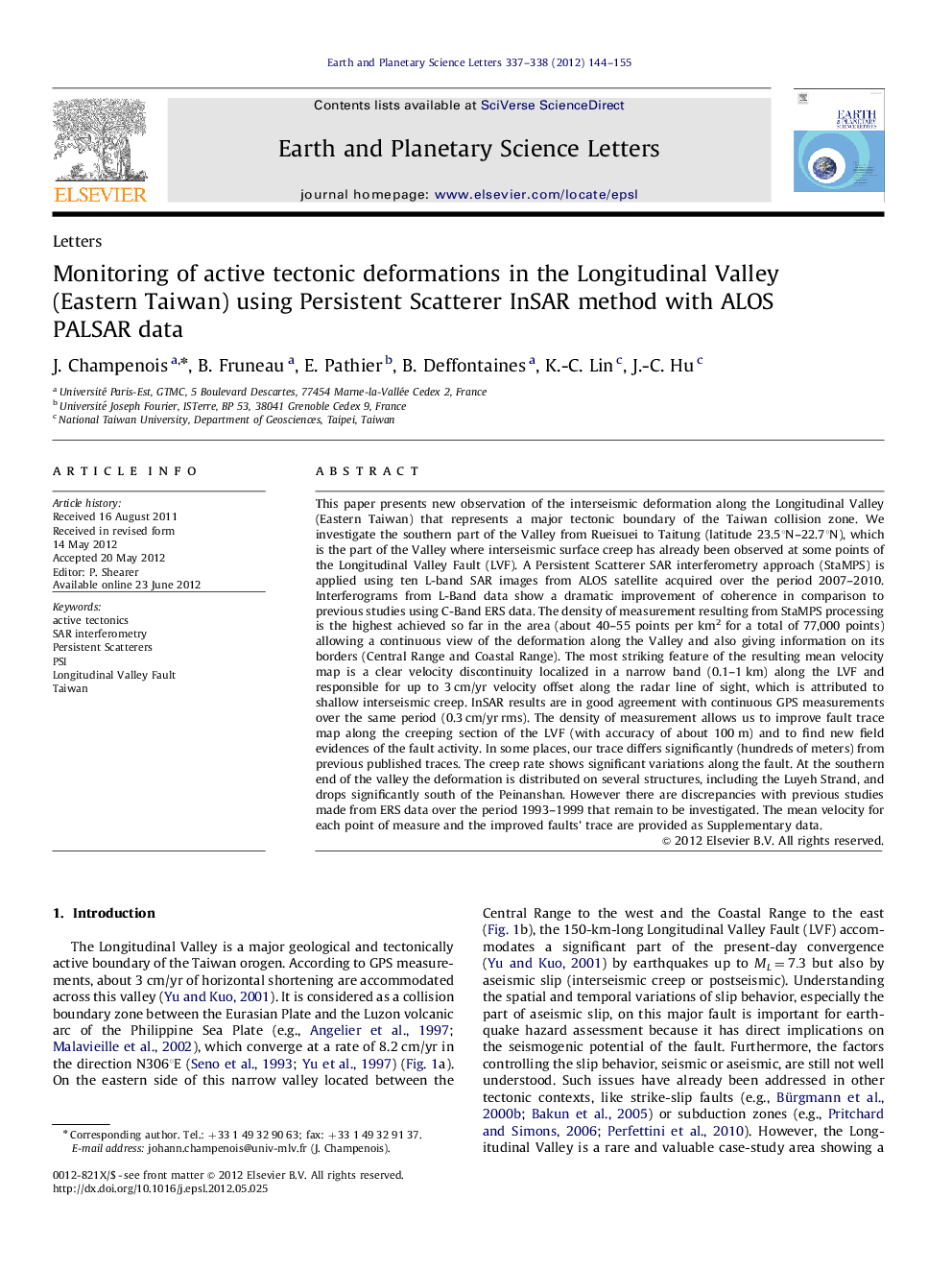| کد مقاله | کد نشریه | سال انتشار | مقاله انگلیسی | نسخه تمام متن |
|---|---|---|---|---|
| 4677450 | 1634802 | 2012 | 12 صفحه PDF | دانلود رایگان |

This paper presents new observation of the interseismic deformation along the Longitudinal Valley (Eastern Taiwan) that represents a major tectonic boundary of the Taiwan collision zone. We investigate the southern part of the Valley from Rueisuei to Taitung (latitude 23.5°N–22.7°N), which is the part of the Valley where interseismic surface creep has already been observed at some points of the Longitudinal Valley Fault (LVF). A Persistent Scatterer SAR interferometry approach (StaMPS) is applied using ten L-band SAR images from ALOS satellite acquired over the period 2007–2010. Interferograms from L-Band data show a dramatic improvement of coherence in comparison to previous studies using C-Band ERS data. The density of measurement resulting from StaMPS processing is the highest achieved so far in the area (about 40–55 points per km2 for a total of 77,000 points) allowing a continuous view of the deformation along the Valley and also giving information on its borders (Central Range and Coastal Range). The most striking feature of the resulting mean velocity map is a clear velocity discontinuity localized in a narrow band (0.1–1 km) along the LVF and responsible for up to 3 cm/yr velocity offset along the radar line of sight, which is attributed to shallow interseismic creep. InSAR results are in good agreement with continuous GPS measurements over the same period (0.3 cm/yr rms). The density of measurement allows us to improve fault trace map along the creeping section of the LVF (with accuracy of about 100 m) and to find new field evidences of the fault activity. In some places, our trace differs significantly (hundreds of meters) from previous published traces. The creep rate shows significant variations along the fault. At the southern end of the valley the deformation is distributed on several structures, including the Luyeh Strand, and drops significantly south of the Peinanshan. However there are discrepancies with previous studies made from ERS data over the period 1993–1999 that remain to be investigated. The mean velocity for each point of measure and the improved faults' trace are provided as Supplementary data.
► We study tectonic surface deformations's in the Longitudinal Valley.
► We increase density of measurements using new SAR data.
► We compare map of displacements with GPS data.
► We validate new faults map with field investigations.
► We analyze the spatial variation of creep offsets across faults.
Journal: Earth and Planetary Science Letters - Volumes 337–338, 1 July 2012, Pages 144–155